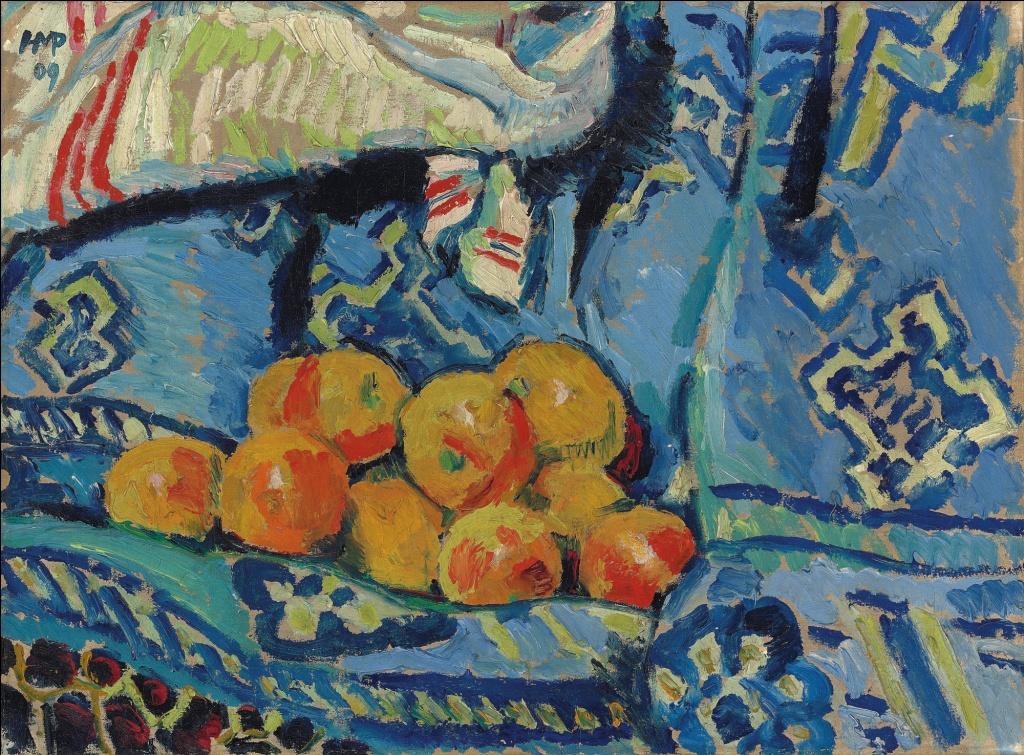Stilleben

The paintingStill Life(1909) by Max Pechstein has some of the refined, decorative aesthetic that is so characteristic of this artist. In particular one can point to the freshness of the colours and the intuitive, immediate painterly approach. The brushstrokes are applied directly and spontaneously onto the canvas, and the underlying support shines through in several places. The contrast between the warm hues of the fruit and the colder blue tones in the tablecloth are an effective device that produces an elegant unifying colouristic effect.
Max Pechstein was a member of the German expressionist groupDie Brücke(1905-13), whose artists are especially known for their crude and bold mode of expression, when it comes to both painting method and palette. Pechstein stands out to a certain degree, in this respect, as his pictures are often reminiscent of a more subdued, refined French form of Expressionism. With regard to this picture, it is more relevant to compare it to Matisse paintings from the same period.
This painting can be viewed at close range in the National Gallery in Oslo, together with the Savings Bank Foundation’s other works by German Expressionists.
OWG